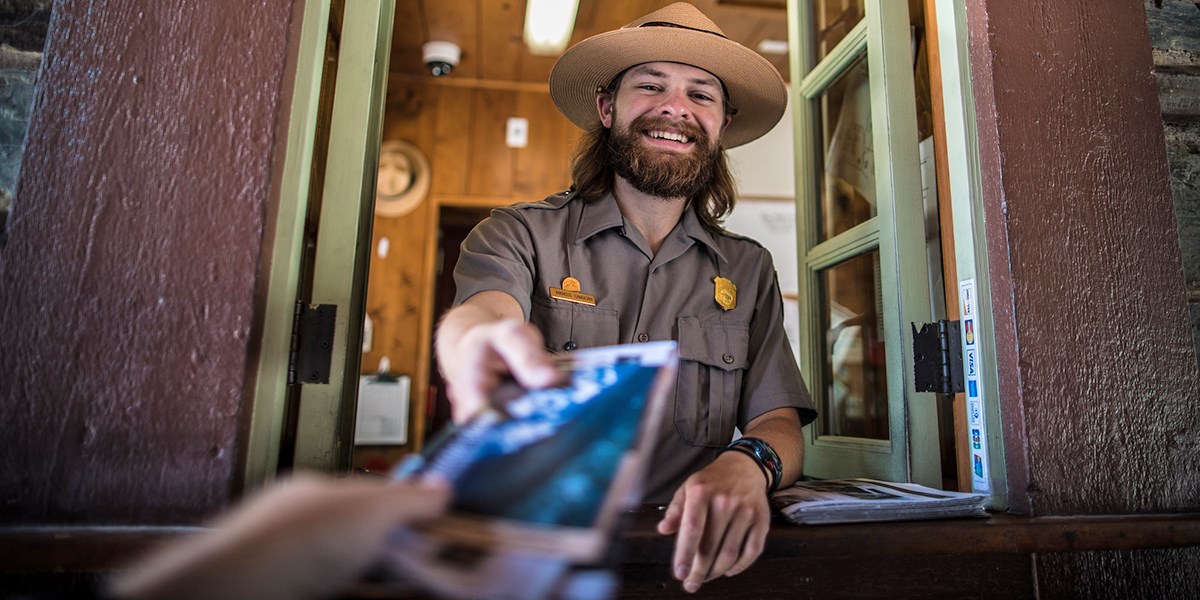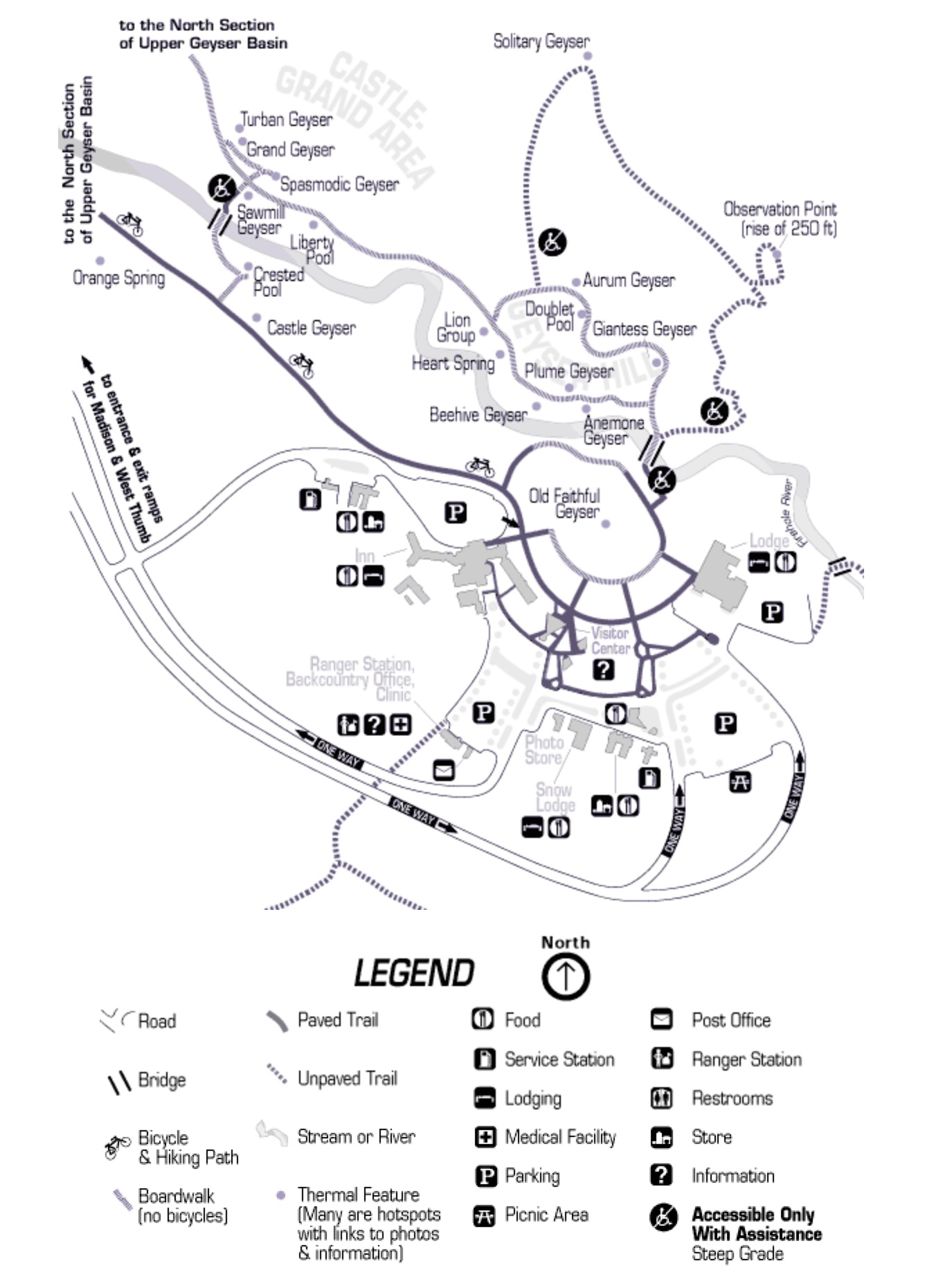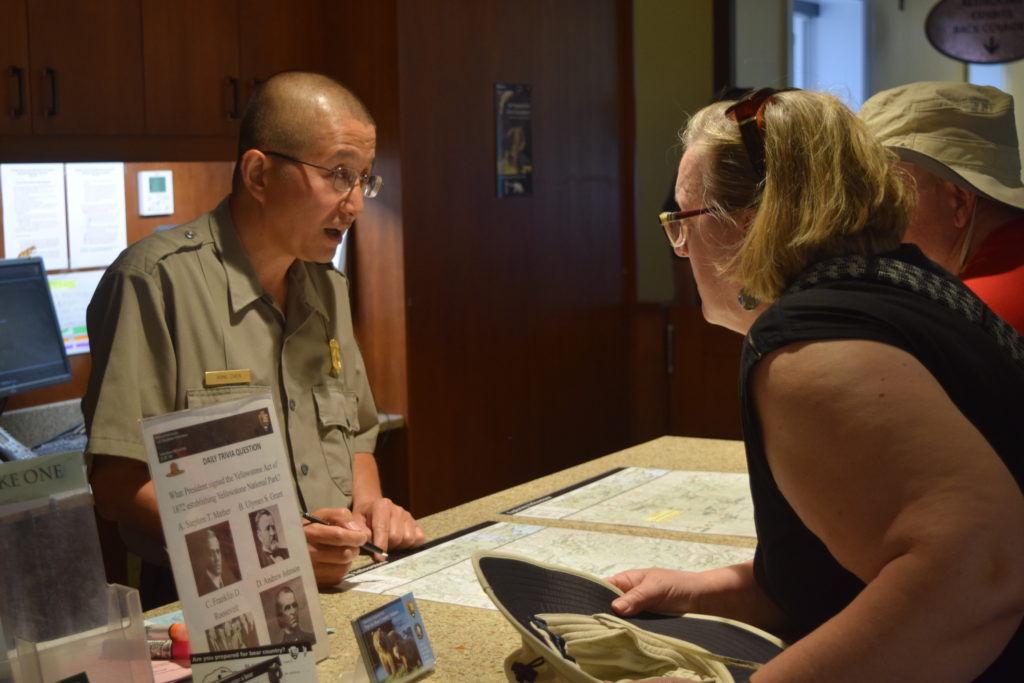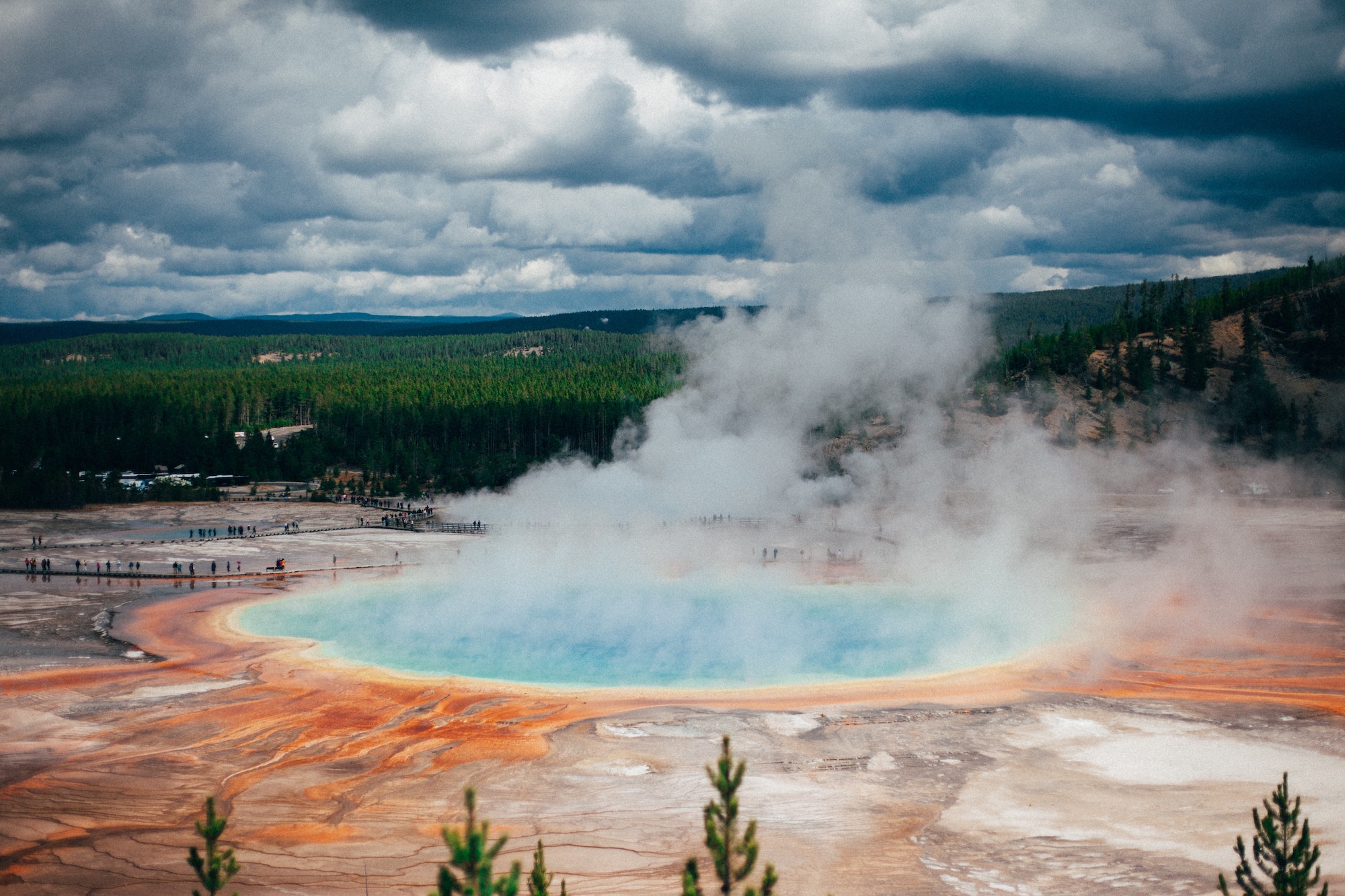Many students have a hard time understanding the relationship between a resume and a cover letter. I mean, think about it: why do you need both of these documents for so many applications? Don’t they just repeat each other, making one of them unnecessary?
Well no, not actually. I'll explain.
A Metaphor
Let’s say you’ve just arrived at the entrance to Yellowstone National Park. You’ve got your family in the car, and you’re hoping to do some hiking and maybe see Old Faithful erupt before the end of the day. The park ranger at the gate hands you a map:
Whoa! It turns out Yellowstone is…kinda humongous? At 3,472 square miles, it’s larger than Rhode Island and Delaware combined. It has almost 500 miles of roads, over 1000 miles of trails, 11 visitor centers and museums, nine hotels and lodges, 12 major campgrounds, and who-knows-what-else.
Okay, well, the map is only sort of useful in this situation. You can see, for example, where Old Faithful is located, and there are a few trails marked here and there, but there isn’t enough information to really plan your day. For instance, your kids are little, so any hikes you do can’t be too strenuous or long—ideally the trail would be flat enough and wide enough to accommodate a double stroller. Also, the map doesn’t tell you when Old Faithful is going to go off.
You need more detailed information, so what do you do? You ask the ranger, of course.

Better ask quick—there's a long line of cars behind you!
Photo by nps.gov
You explain your situation, and the ranger kindly shares his expertise, pointing out that most trails in the Old Faithful area are stroller-friendly and that Old Faithful eruption times are posted at the visitor center there. You take the ranger’s advice and have a nice day in the park. Sweet!
Interpreting the Metaphor
In this metaphor, the map of Yellowstone is like a resume. It’s a reference document—that is, it provides the breadth of information about you—and as such, it can be a bit overwhelming to someone who doesn’t know you.
The ranger with his advice is like a cover letter. Where the map provides breadth, the ranger provides depth, offering specifics and helping you understand what parts of the map are most relevant.
If you only had the map but not the ranger, it would be difficult to find what you needed. It’s the same for a resume without a cover letter—a resume provides a sketch of you in broad strokes, but there’s both too much information and too many gaps to be all that useful on its own.
If you only had the ranger but not the map, you’d be forced to do exactly what the ranger says or risk getting lost. A cover letter has the space and the structure to paint a more detailed picture of you, but without the resume, that one angle is all the potential employer would be able to see.
Does that clarify the relationship between the resume and cover letter? They don’t simply repeat each other. The resume gives the overview, the big picture, and it covers a lot of ground. The cover letter, on the other hand, highlights and elaborates on specific details that the reader might not otherwise see, giving a more complete picture of a smaller slice of the whole.
Complicating the Metaphor
Once you understand the relationship between a cover letter and a resume, you’re already empowered to submit stronger applications than most other people applying to the same jobs you are. But we can take it even further.
Recall the three big mistakes everyone makes when applying for jobs:
- Failing to Understand Employers’ Needs
- Sending the Wrong Message
- Making Claims without Evidence
About first mistake, I pointed out that many job applicants use the same cover letter and resume for every application, hoping that by flooding the market with their materials, they’ll find at least one job for which they are a good fit. It’s a risky strategy, especially when one of the things employers in all fields are usually looking for is someone who can respond to individual situations appropriately.
I suggested that a better approach is to use a master resume to generate a job-specific tailored resume for each individual position you’re applying for—that way, your resume can always be tailored to the needs of the employer. The master resume is a non-formatted, unlimited-length version of your resume which includes every possible entry that you might use on a tailored resume: all the jobs, all the awards, and the education, all the volunteer work.°
When we plug this idea of a master resume into the metaphor we’ve been using, it helps us avoid the second mistake, that of sending the wrong message. Recall that I pointed out that many people assume the point of the resume and cover letter are to land you a job—but that’s like assuming the point of a first date is to get engaged. On the contrary, all the resume and cover letter are meant to do is score you an interview. Knowing that frees you from needing to cram everything into a one-page resume.
Before, we posited that the big Yellowstone map was the resume and the ranger was the cover letter. While it is true that the ranger was able to help you make sense of the map, he was limited in how helpful he could be, what with all the cars behind you waiting to get through the gate.
Now imagine that instead of talking to the ranger at the gate, you first drive into the park and head for the Old Faithful Visitor Information Center. Once there, you find an area map—a detailed, zoomed-in view of just the surrounding area, with much greater detail about the trails and sites.

Using this map, you get a clearer idea of what you’d like to see, and then you find a ranger who specializes in this part of the park, running your ideas by him.

From Yellowstone Insider
Whereas the first ranger could give you general info, this ranger hikes these trails every week, so he knows exactly which trails will accommodate your stroller. He’s also able to tell you something that doesn’t appear on the area map and that the other ranger doesn’t know: a herd of bison were spotted earlier along a section of trail most people ignore. He further reveals that, if you head out right now, you should be able to finish your hike just in time for Old Faithful’s next eruption. Using this inside information, your day in the park will be even better.
See what we’ve done here? The Yellowstone map is the master resume, a complete record of everything about you that might be useful in a job search. The area map is the job-specific resume. By figuring out what the employer is specifically looking for, you can ditch any unnecessary details and instead focus on just that slice of your experience that is most relevant to the job, the way an area map offers more detail about a smaller area. The ranger is still the cover letter, but by tailoring your letter to the area map instead of the full map, you better serve your potential employer’s needs.
Imagine things from the hirer’s perspective for a minute. They advertise for a job, and in response they get a bunch of maps of national parks—millions of acres of potential. But they aren’t looking for a national park; they are looking for just one trail. If your resume is a detailed area map and your cover letter a personalized guide to choosing trails, you serve their needs best.
It’s not a guarantee you’ll be the trail they are looking for, but it dramatically improves your chances of not being overlooked if you are.





